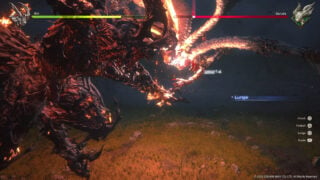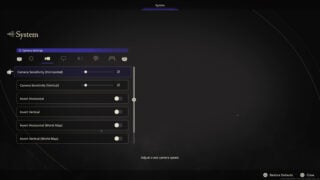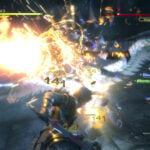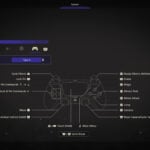Earlier this month, Square Enix held a global media tour for Final Fantasy XVI, allowing members of the press to go hands-on with the next mainline entry in the Final Fantasy series for the first time.
Present at the event were Final Fantasy XVI producer Naoki Yoshida, director Hiroshi Takai, combat lead Ryota Suzuki, and localization director Michael-Christopher Koji Fox.
Before press were sent off on their own to go hands-on with the game, Yoshida, through interpreter Koji Fox, gave press a thorough overview of the core development team, setting, characters, and gameplay of Final Fantasy XVI.
Core Development Team
“As you can see, we’re not much to look at,” Yoshida said, with photos of the Final Fantasy XVI core development team on screen.
“First off, we have myself, Naoki Yoshida. I’m the producer on Final Fantasy XVI.
“Next up, we have our main director, Hiroshi Takai.
“Up next, we have our creative director and main scenario writer, Kazutoyo Maehiro.”
Koji Fox added, “Next up, we have myself, localization director, Michael Christopher Koji-Fox… In addition to localization director, I’ve worked on a lot of different things on Final Fantasy XVI, such as aspects such as lore and motion capture, the language, the culturization, voice recording, writing, and more. I’m kind of like a jack-of-all-trades on this project.”
Yoshida continued, “Next up, we have our art director, Hiroshi Minagawa, who you may know from Final Fantasy XIV, Final Fantasy XII, and Final Fantasy Tactics. All those games that are known for their impressive visuals.
“In the sea of familiar faces, I’d like to introduce you to our new star combat director, Ryota Suzuki. After spending the majority of his career at Capcom, he joined the Final Fantasy XVI team to help us create our unparalleled real-time action experience.
“And last but not least, we have our sound designer and composer, Masayoshi Soken, who, as you know, also works with me on Final Fantasy XIV.
“So you can see the ones that look the most tired and have the palest faces are the ones that work on both projects [Final Fantasy XIV and Final Fantasy XVI.”
What is Final Fantasy XVI?
“First off, it’s the latest numbered entry into the story of Final Fantasy series, a series that you know has 35 years of history,” Yoshida explained.
“Just that fact alone can be daunting to a lot of new players. Will they have to play all previous 15 entries in the Final Fantasy series before getting into XVI? And the answer to that is absolutely not. While the titles, of course, are numbered, each game in the Final Fantasy series is its own unique experience. It has its own story, its own characters, its own systems, and its own feel. And so Final Fantasy XVI, in this respect, is no different. Players who have played the Final Fantasy games since Final Fantasy I can enjoy XVI just as much as players who have never played the Final Fantasy series, and this is their first foray into the series. So, this is one thing that we’ve worked really hard on… You don’t have to have any experience with the series before you get into XVI.
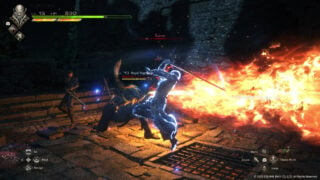
The Four Main Pillars
“Final Fantasy XVI has been developed with a focus on four main pillars—things that players have come to expect from the games in the series. So, first and foremost, narrative. For this game, we wanted to go back to the rich, high fantasy roots of the series, something that was complex and interwoven, something that touched upon politics and justice and values, that would not only be appealing to younger fans just stepping out in the world, but older fans who have experienced a lot themselves.
“One thing that was important to us, though, was to tell a story that was complete, from beginning to end, and at that we think we have succeeded. To facilitate this, there are over 11 hours of cinematic cutscenes in the main scenario alone, all seamlessly interwoven into the game experience, playing in-engine in real-time.
“And second, we have a vast ensemble cast. Each character is unique in their backgrounds and motivations, and each has their own unique arcs that play out throughout the narrative. And while the main focus is on Clive Rosfield, as he seeks vengeance for the loss of his family and nation, through this journey, players will witness the fates of the remaining cast collide.
“Our development has also put a focus on graphical quality. We wanted to take advantage of PlayStation 5‘s power to create a massively detailed world that was only possible in the video game.
“And finally, and possibly most importantly, is our dedication to creating a fresh, exciting new battle system. Over recent years, real-time action games have continued their march to becoming the norm amongst gamers. To keep in step and further evolve the Final Fantasy series, XVI has stepped away from the traditional command-based battle system, more common in the older games in the series, and adopted true real-time action controls. But this doesn’t simply involve controlling Clive himself.
“In addition to smaller scale battles, the shining point of Final Fantasy XVI‘s battle system are the summon versus summon battles, which allow players to control giant beings known as Eikons to carry out battles on a massive scale.”
He added, “All of that is possible because of the power of the PlayStation 5.
“Players will experience seamless transitions from gameplay to cutscene to battle, all without load times. Something that helps maintain this feeling of a non-stop roller coaster ride that we ultimately have been aiming for.”

World
“Next, I’d like to talk a little bit about Final Fantasy XVI‘s game world, the realm of Valisthea.
“As you can see, dotted about the landscape exists the mother crystals, these well-springs of life and prosperity around which the realm’s nations are situated and which power the land’s magicks. One might think of these Mother Crystals as large oil fields from which the world gets their energy, energy known as ether. However, as the resources start to dry up, the struggle amongst their nations arises, which ultimately leads into war and conflict.
“The realm is comprised of five nations and one neutral state located on two different landmasses, Storm in the west and Ash in the east.
“First off, we have the Grand Duchy of Rosaria, the nation from which our protagonist, Clive Rosfield, hails. The Duchy, while it may not have much influence on the political stage as the other nations—remains proud, confident in their history and traditions, and ruled by a benevolent leader who seeks stability over chaos. Their Eikon is the Phoenix, the Warden of Fire.
“And next, we have the Holy Empire of Sanbreque, a large and powerful theocracy, where citizens maintain a strong faith in both their goddess and their emperor. The massive crystal that you see at their northern capital makes them one of the most powerful and advanced nations in the realm. Their Eikon is Bahamut, the Warden of Light.
“And unlike the two previously mentioned nations, which are situated on the western half of Valisthea’s twin continent, Storm, our next nation is situated on the eastern landmass of Ash. Here, in isolation, schemes the nation of Waloed, which was the only nation left standing in Ash after its king conquered all the remaining tribes, both human and demi-human. Their Eikon is Odin, representing darkness.
“Next, we have the Dhalmekian Republic, a nation compromised of five independent states located in the southwestern reaches of Valisthea. Though a desert nation, they thrive via trade, and while blessed by their mother crystal, which unlike the others, is literally an entire mountain in itself. They are ruled by a council of ministers, but the true power lies in their Eikon, Titan.
“Next, we have the Iron Kingdom, an ancient nation located on the islands off the western coast of Valisthea. Unlike the rest of Valisthea, the Ironblood see these mother crystals themselves as sacred and worship them as their deity. Fanaticism reigns on their volcanic island home, and all other people are viewed as heretics, deserving of subjugation.
“Finally, we have the Crystalline Dominion, a neutral state at the very center of Valisthea, between the landmasses of Storm and Ash. Here we find the largest mother crystal in all the realm. Long ago, an agreement was made by all the other nations that the Dominion could not be claimed by any other, and that its mother crystal would remain neutral, a benefit to all nations, not just one. Of course, that makes it ripe for the plucking, and this area becomes the center of a realm-wide conflict.”

Exploration
“In the past, I’ve mentioned that Final Fantasy XVI is not an open-world game, but what exactly does that mean?
“So to bring the players a wide variety of detailed environments in the highest quality possible, ultimately enhancing the game experience, we selected several areas that we wanted to focus on and created those in extreme detail. We have several large areas connected by a world map. These areas, while not what you’d call open world, are still quite expansive and offer lots of opportunities for exploration.”
Yoshida then played a second video, showcasing a variety of areas available for Clive to explore.
“What you saw here, these are not from cutscenes, these are actual areas that Clive and players will be able to explore. And while not a fully open-world game, we do have many, many of these areas that are available for exploration. So those of you who are worried about the limits of the world, you can rest easy.”
Characters
“Next, I’d like to shift focus to our characters.
“And by characters, we mean specifically our Dominants, the wardens of the elements and the keepers of the Eikons that play such a central role to our narrative. Unlike in past Final Fantasy titles, where these creatures are summoned by a summoner, Dominants actually become the Eikons themselves, these massive elemental creatures that range from a size of 60 feet up until 360 feet. In Final Fantasy XVI, these creatures will clash in epic battles, each of them unique in its concept.
“But the Eikons are just not about battle. In Final Fantasy XVI, we will deeply explore the backstories of each of these dominants who carry the Eikons. What drives them? What are their aspirations? What are their desires? How do their respective nations treat them? Some are revered as heroes, while others are made slaves. One thing that can be said about all of them, though, is that they’re powerful, akin to these weapons of mass destruction, capable of destroying the entire realm if left unchecked. Luckily, however, the Dominants check each other, creating this delicate Cold War-type balance.
“So let’s take a look at our main protagonists, as well as those Dominants, starting with the protagonist, Clive Rosfield. As you know, Final Fantasy XVI is his tale, and the story follows him through three distinct stages of his life—his teens, his twenties, and his thirties. As such, we can get a more detailed picture of how Clive reacts and changes to the challenge he faces over the span of his life.
“Our story begins with Clive obsessed in his pursuit of revenge. We see through this playable flashback that he was supposed to have been born the Phoenix, but was not. That blessing, or curse, falling to his younger sickly brother. Instead, he learns the sword and is finally selected as First Shield, tasked with protecting his brother. However, his brother is lost, sending Clive down this dark and lonely path of vengeance.
“But Clive is not alone in his journey. We can also not forget his faithful companion, Torgal, who accompanies Clive along this journey and fights alongside him. H’s a great fighter and great in battle. He’s also really cute, and of course, you can pet the dog.
“And here is Clive’s younger brother, Joshua, who controls Phoenix, the Eikon of fire. Joshua, early in the game, grants Clive with what’s called the blessing of the Phoenix, that allows Clive to use several of the Phoenix’s Eikonic abilities. It is losing Joshua, however, at a young age that drives Clive and motivates him on his journey.
“Next, we have Jill Ward, a ward of the Rosfield family and longtime friend of both Clive and Joshua. Tragedy separates the friends, and it is during this time apart that the Eikon of ice, Shiva, awakens with inside Jill. She is Clive’s closest companion and accompanies him on his difficult journey to find the truth, but she is much more than just a side character. She is a strong-willed fighter with her own complex story, which players will watch unfold alongside Clive.
“And then fans of the series will probably recognize the name Cid, as he has become one of the few constants throughout the series. Though our Cidolfus Telamon is completely different from those who have come before. Controlling the Eikon of thunder, Ramuh, Cid is a leader of a group looking to change the world. Fate brings Clive and Cid together, opening Clive’s eyes to the real world and changing his life forever.
“And next, we have Hugo Kupka. His official title is permanent economic advisor for the Dhalmekian Republic, but he is best known as Titan, an Eikon of the Earth’s dominant. When it comes to battle, the Republic leans heavily on Titan’s talents to secure their political position in the realm, something that the highly intelligent Hugo is all too willing to take advantage of.
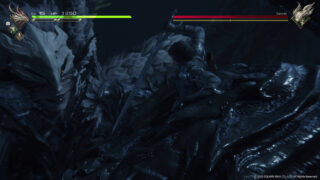
“Next, we see Benedikta Harman, who, despite being a Dominant and harnessing the power of Garuda, Eikon of wind, serves the Kingdom of Waloed as a spy, choosing to wield her talents out in the field. She has a dark past, as well as connections to both Cid and Hugo. We also have mentioned in earlier interviews that each nation usually only has one Dominant, but in her case, she works for Waloed. As to why, you have to play the game to find out.
“Here we have Dion Lesage, Prince of the Holy Empire of Sanbreque and Dominant of Bahamut, Eikon of light. He is also the Lord Commander of the Imperial Army’s dragoons and a hero to Sanbreque’s citizens. He too, however, has his own troubles and, as players will see, soon falls victim to fate’s dark pull.
“And finally, we have Barnabas Tharmr, Waloed’s regent and Dominant of Odin, the Eikon of darkness. Much of Barnabas is shrouded in mystery as he works from behind the scenes, but we do know that it was by his hand and his sword alone that the Warring Tribes of Ash were conquered and the continent unified under the Waloeders’ standard.”
Battle System
“Finally, I want to talk a little bit about our twin-tiered battle system.
“Final Fantasy XVI‘s battle system can be split into two different distinct types of battles.
“First and foremost, the battles where a player controls Clive, and Clive uses abilities that originate from the various Eikons that he meets along his journey.
“And the second type of battle that we have are large-scale battles in which Clive controls an Eikon to fight another Eikon. These battles not only differ from normal battles, but are all original and unique experiences created from the ground up to be specific to each battle.
“As I mentioned, these boss battles, these epic Eikon versus Eikon battles, are all created from the ground up from scratch to be unique to each battle. They are not reused in the game, they’re only used once, and hopefully will bring players a very unique and exciting experience for each of the battles.
“There are many different types, from a heavy weighty type of feel, like a pro wrestling match, to ones that are more like a 3D shooting type of game or high-speed action.”
Party Battles
“Clive will have opportunities to fight in a party. However, because again, with our game design, we wanted players to be able to focus on the real-time action battles, party members will be fully AI controlled. That said, in addition to battle, there is a lot of chatter between the party members throughout the game, and they bring a lot to the story.”

Companion System
“While other party members are often only temporarily with Clive, and are fully AI controlled, Clive’s trusty hound, Torgal, is almost always with Clive, regardless of who else is with him. In addition, Clive can also give Torgal simple commands, like you see here, to affect how he fights in battle. Of course, for those players who might find this overwhelming, we do have an accessory that will fully automate all these commands.”
Eikon Abilities
“Then we talked a little bit earlier about battles with Clive. As we mentioned, as the game progresses, Clive will have the opportunity to learn new and exciting abilities from the Eikons he encounters during the story. Those can be used alongside Clive’s default abilities. These can be purchased and upgraded using ability points earned by leveling up, and they can be used to fit each individual player’s play style. Of course, for those who cannot decide, there’s a feature that auto-acquires recommended abilities, as well as a re-spec option that allows players to basically re-spec their build at any time, without any cost.”
Accessibility
“Of course, we understand that this switch to real-time action can be overwhelming and intimidating for players who are not used to these real-time action games, or those players who simply want to focus more on the story than on the action. So we’ve worked hard to make this game accessible not only to high-level fans, but also those players as well, that maybe are not as good as action games as others.
“For players who are ready for the action, we recommend what we call our ‘Action Focus’ mode. And for those who want to focus on the story, we have what’s called ‘Story Focus’ mode. But what is the difference here? Are these just difficulty settings, like easy or hard? The answer to that is no. And the true answer lies in this set of accessories that we have that we call the Timely accessories.
“These accessories, of which up to two can be equipped at a time, make certain aspects of the games easier, such as dodging incoming attacks automatically, or simplifying complex combos down to a single button press. Selecting ‘Story Focus’ mode equips these items from the start, whereas selecting ‘Action Focus’ mode means they’re unequipped from the start. And that’s the only difference.”



Yoshida then showcased a video of Clive using the “Ring of Timely Strikes” and “Ring of Timely” focus accessories. The former simplifies complex combos into a single button press, while the latter slows down time right before an incoming attack lands, prompting the player to press R1 so that Clive can dodge out of the way at the last minute.
Yoshida continued, “Accessories like these make the game more accessible without taking away all the fun, ultimately maintaining this feel that the player is really playing and what they’re doing matters, not just turning on an auto-battle system and doing nothing at all.
“Again, Final Fantasy XVI doesn’t have a difficulty setting. The difficulty is changed by which of these timely accessories you have equipped. And so there are lots of different combinations because we have lots of different accessories.”
Conclusion
“As we come to the conclusion, we are also coming to the conclusion of our development of Final Fantasy XVI. We’re almost close to master up and ready to launch the game on June 22, 2023 worldwide.
“I can tell you that we do not foresee any delays and barring some act of God, like a meteor hitting our headquarters in Japan, the game will be coming out on time.
Yoshida also mentioned that the demo playable by members of the press that day was not fully optimized and in many ways different from the final game. The development team is currently in the process of optimizing the performance, and the version showcased was the 4K graphics-heavy “Performance Mode,” but a “Frame Rate” mode that prioritizes frame rate will also be in the full game. The demo itself is also set five hours into the story.
Final Fantasy XVI is due out for PlayStation 5 on June 22 worldwide.
View a new set of screenshots at the gallery
Screenshots
- ❮
- ❯


